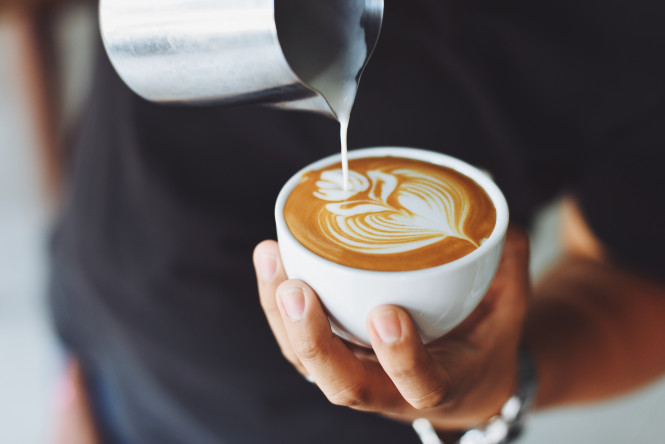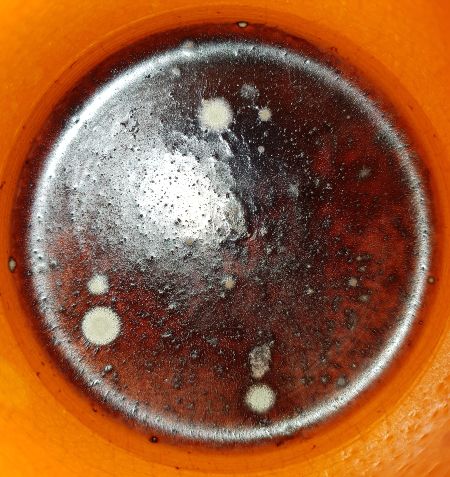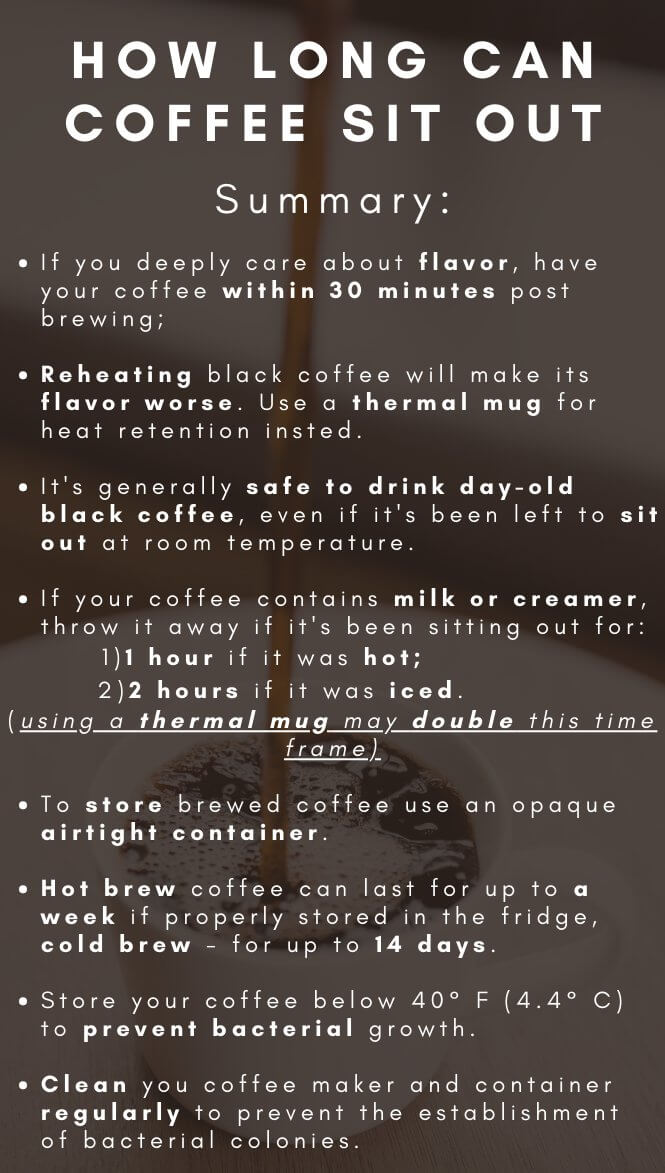I’m guessing that you’ve at least once had an eight-hour old, scalding hot, gas station coffee.
Or you’ve probably taken a sip or two from the coffee mug that’s been sitting out on the kitchen counter overnight?
Let’s face it, we’ve all had old coffee at some point in our lives, with or without knowing it. But is it safe and could this harm us in some way?
Of course, the storage conditions and the coffee condiments, such as milk or creamer, do matter for the beverage’s shelf life.
Products kept in the fridge usually last longer, but is it in some way possible to have a Starbucks latte from yesterday without any negative consequences?
What about plain black coffee that’s been left at room temperature for a while – is it bad for you?
In this post, you will find out how long can coffee actually sit out and what happens if you drink day-old (or even older) brewed coffee.
Let’s see!
How Long Can Coffee Sit Out?
Brewed coffee can only last for 30 minutes at room temperature without its flavor being notably compromised.
After a couple of more hours, apart from losing its aromatic compounds, the coffee would develop off-flavors and an unpleasant bitter taste.
Nevertheless, plain black coffee can sit out at room temperature for more than 24 hours after brewing. It will still be considered safe to consume, though its original flavor will be lost. On the other hand, hot coffee with added milk or creamer shouldn’t be left out for more than 1 to 2 hours. This applies to almond milk coffee too. Remember to throw away your latte or cappuccino if it’s been sitting on the counter for over 2 hours.
It’s generally considered that brewed black coffee can last for a week in the fridge. If it’s a cold brew, it’s recommended to consume it within 10 to 14 days after preparing a batch.
Anyway, no matter whether you keep your coffee at room temperature or in the fridge, the level of flavor preservation depends on the storage container you use. I’ll touch on that in more detail in the following sections later.
What happens to brewed coffee if it’s left to sit out?
If you leave your coffee to sit out for too long, it will inevitably start to go bad. However, different people have different understandings of what “going bad” actually means.
According to those who are rigorous about the flavor profile of their caffeinated drink, the coffee is good for only 30 minutes post brewing.
At the same time, others would make a full pot of drip coffee on Sunday and have it daily throughout the following week without even storing it in the fridge.
But what actually happens to your coffee if you decide to let it sit out for that long? Let’s see.
The Flavor Will Deteriorate
Coffee goes stale because of a chemical reaction called oxidation. This reaction is actually quite common and involves electrons being transferred from one molecule to another.
The coffee’s flavor consists of highly volatile aromatic compounds that oxidize easily when they come in touch with oxygen, which is how flavors get lost. This process occurs much more rapidly at higher temperatures. This is why cold brew coffee preserves its flavor for longer than hot brew.
By the time your freshly brewed coffee cools off – which usually takes around 30 minutes – it has actually lost most of its pleasant flavor and aroma.
Furthermore, if you let your coffee sit out overnight, its volatile flavor substances would evaporate within the air until they’re completely gone.
It’s very efficient, sturdy, convenient to use, and also perfect for traveling.
Anyway, if you’re aiming for the best-tasting coffee, make sure you have it shortly after it’s brewed.
With that being said, letting your coffee sit in an airtight container would limit the oxidative reaction and keep the flavors in your brew for longer.
If you keep your brew in the fridge at a lower temperature, this would also decrease the rate at which your coffee loses its aroma.
Just make sure you keep the drink in a tightly sealed container, as coffee is very prone to picking up the flavors of other food items that you store in the fridge.
No matter where you leave your coffee or what storage container you use, you should still keep in mind that once brewed, its pleasant flavor will inevitably deteriorate with time.
The oxidation would also lead to a better-pronounced, even harsh, bitterness. This won’t matter that much if you’re used to adding milk, creamer, and/or sweeteners to your coffee.
Just make sure you add the milk or creamer to the coffee right before you drink it. If that’s the case, you can have day-old coffee without worrying about its flavor that much.
Interesting fact: At some places (restaurants, hotels, gas stations, etc.) they try to mask the staleness of the brewed coffee that’s been sitting in the pot for hours by serving it scalding hot.
After all, the sensation of your burning tongue covers up the unpleasantness of the caffeinated drink.
When it cools off and you take a sip you realize that the coffee is outrageously bad and very bitter.
In such cases, some would add a pinch of salt to the coffee to mellow down the harsh bitterness.
The Milk in your Coffee Will Go Bad in Only 2 Hours
Photo by Chevanon Photography from Pexels
To be safe to consume, milk should be stored at 40 °F (4.4 °C) or below.
This temperature range is known as the “danger zone”.
There is evidence that bacteria found in milk and other hazardous foods such as eggs or meat will begin to grow rapidly if left at a temperature within the range of the so-called “danger zone”.
The general rule of thumb is to throw away coffee with milk that has been left to sit out at a temperature of between 40 °F – 80 °F (4.4 °C – 26.6 °C) for longer than 2 hours.
If the temperature was higher – between 90 °F (32.2 °C) and 140 °F (60 °C), you should toss away the milky beverage after 1 hour.
Based on this rule, I always try to finish up my iced latte within 2 hours after it’s made, and my hot latte within an hour after it’s made.
In this line of thoughts, you can’t leave your Starbucks coffee with milk to sit out overnight. Even if you reheat it to a temperature above 140 °F (60 °C), consuming it may lead to digestive discomfort.
So if you want to drink coffee that’s been left out overnight, the only way to have it with milk is by adding the milk right before drinking it.
Coffee Oils Will Go Rancid With Time
While I was doing my research for this post, I saw that a few online sources say that if you leave your coffee at room temperature for longer than 4 hours, its oils will start to go rancid.
Rancidity results from an interaction between coffee oils and oxygen. Rancidification is one of the oxidation reactions that lead to the development of an unpleasant coffee flavor. Another consequence of this reaction is the formation of free radicals, which may cause oxidative stress, something that may have a negative impact on human health.
Unfortunately, I can’t seem to find any scientific evidence that it actually takes 4 hours for coffee oils to start to oxidize.
Coffee oils are more stable compared to the aforementioned aroma compounds which oxidize quite fast. Nevertheless, the oils will, in fact, go rancid with time; quicker if exposed to air, light, or if stored at a higher temperature.
So if you want to limit the rancidification of the coffee oils, you should store your coffee in an airtight, opaque container like this one by Thermos (click to check out on Amazon). Keeping your coffee in the fridge would also slow down the process.
The Caffeine Content will be Perserved
If you’ve left your coffee to sit out overnight and you’re only concerned about its caffeine content, don’t worry, your brew will contain caffeine. Caffeine is quite stable and won’t degrade, which is why even weeks post brewing, your coffee will still have energizing properties.
The Woke Lark’s Note: freshly brewed coffee, especially if made with freshly roasted and ground beans, has a high antioxidant content. Nevertheless, if you let your coffee sit out overnight, or for a day or two, its antioxidants will start to deteriorate too. So even though it contains caffeine, old coffee won’t have the same beneficial potential compared to fresh coffee.
Molds and bacteria may start to appear
If left to sit out for long enough, brewed coffee will eventually start to grow mold. This usually happens after 4 to 7 days after brewing if the coffee is left at room temperature.
Bacteria growth is another process that we need to consider when discussing the potential harm of day-old coffee. To be fair, plain black coffee isn’t considered a potentially hazardous food, as it has very little carbohydrates or protein, so it can’t support the rapid growth of microorganisms.
It’s rather unlikely for a cup of day-old coffee to attract foodborne pathogens that may cause disease.
Furthermore, there is evidence that caffeine may have an antibacterial effect on some bacterial species such as the infectious Escherichia coli (E. coli).
With that being said, we should point out the fact that it’s very important to regularly clean your coffee maker, coffee pot, or the container in which you store your brewed coffee.
I say that as, according to this study, some bacteria species still manage to establish their colonies in a coffee machine and as a result, they may contaminate our coffee.
One of the most frequent bacteria found in coffee makers was Pseudomonas, which are known for their potential caffeine-degrading properties.
So if you don’t clean your pot or coffee maker regularly, and you tend to use it frequently, then your coffee may have a higher chance of being contaminated with Pseudomonas.
This means that your coffee may gradually lose its caffeine content if you let it sit out for a long time.
Anyway, heat does kill most bacteria, including Pseudomonas, so if you reheat your day-old coffee in the microwave or on the stove, you will likely get rid of the potential bacterial growth inside.
However, don’t forget that heating would further alter the chemical makeup of the coffee, making it much more unpleasant in terms of flavor.
Seven days after the brewing there were no signs of mold in the coffee – both in the fridge and in the cup that’s been left on the kitchen counter.
To be fair, I wasn’t expecting such an outcome.
In terms of flavor, I took a sip from the one that had been left out at room temperature when it was day-old and it tasted very, very bad (unpleasant woody taste combined with notes of burned rubber).
However, I’m a person who loves pure black coffee when it’s fresh and made with high-quality beans, that are ground before brewing, etc. You get the idea, day-old coffee is not for me.
With that being said, some people have day-old (and even older) black coffee on the regular, without having an issue with that.
A colleague at my previous job would always brag about how convenient it is to brew a big pot of coffee only once a week to satisfy your daily caffeine needs. He even seemed proud when someone questioned his odd coffee drinking habits as if he was a misunderstood artist that was soon to be discovered and praised for his invention. He said he didn’t keep it in the fridge but in the coffee pot at room temperature. Still, he never complained about mold or some sort of discomfort caused by having a serving of the coffee made on Sunday.
After all, even if it seems a bit odd to me, this strategy works for him, so I’m totally fine with that. While I was doing my research for this post, I found that other people do that too.
Furthermore, in a small coffee house in Osaka, Japan you can get yourself a 22-years-old, barrel-aged coffee. The owner came up with this idea after he found half a year old, brewed coffee in the fridge. He tried it out of curiosity and according to him – it still tasted good. He then put the old coffee in a wooden barrel and after 10 years he tried it out again and it tasted very sweet, almost like syrup. He now offers barrel-aged coffee in his coffee house that costs around $900 per cup.
How Roast Profiles and Brewing Methods influence the Shelf Life of Coffee
There are ways to make your brewed coffee last longer.
The first one would be to make a cold brew.
As I mentioned, because hot water isn’t used in this brewing method, cold brew coffee is more durable. Its flavor will last longer and if kept in the fridge below 40 °F (4.4 °C), cold brew concentrate can be used within 2 weeks post brewing. If you leave it to sit out at room temperature, I’d recommend throwing it away after a maximum of 2 to 3 days.
Anyhow, the roast profile of the beans you use may also influence the pace at which your brewed coffee loses its pleasant flavor and starts to taste bad.
According to this paper the degradation of flavor occurs more rapidly in dark roasts compared to light roasts.
Another thing that may make brewed coffee more stable is the use of paper filters. For example, Chemex filters are very thick and filter out most of the coffee oils.
This may mean that Chemex brew won’t go rancid as quickly as, say, French press coffee.
That being said, I highly doubt that people who use a Chemex ever leave their coffee to sit out overnight. The whole process of brewing coffee with a Chemex or another pour-over dripper requires much more involvement, so I guess that people who tend to drink old coffee, don’t really feel like spending more time making it.
Conclusion
Now you know that black coffee can sit out for a while and still be safe to consume.
In the following infographic, you can see a quick summary of the information we went over throughout this post:
I hope that you found this guide helpful. Feel free to leave a question in the comment section below.





I think this article is alarmist and overstated. I have been drinking coffee for 50 years, and you really have to be negligent to have coffee in any state go bad or become harmful. That said, the flavors do degrade quickly. I agree get it off the heat and into the fridge. Even overnight spoils the top flavor of Columbian coffee freshly brewed and it becomes… just coffee. Best remedy is get used to making smaller amounts you want to consume immediately for flavor’s sake. I remember having coffee leftover in cups or mugs from the night before sitting out in the morning and reheating them in a microwave and downing them. Still good coffee.
To be honest I think that 30 minutes at room temp for hot brew before the flavor begins to deteriorate is a bit of a gross underestimate, seeing as if the flavor compounds were that volatile it’d be nearly as dangerous as Francium a chemical element with a half-life of 22 minutes. I’ve had cups of black coffee I’ve made at home in a standard ceramic mug usually last between the window of 1 hour to 2 and a half hours sometimes encroaching on 3 hours before they’ve started to develop anything off about their flavor, however the other estimates seem to be very accurate with lifetime of the beverage.
Very helpful article. May Allah reward you for posting it.
Can you give information on reheating a latte. For example if I bought a caramel latte and I didn’t finish it quickly, it has gone to room temperature, can I reheat this? Does it follow the 1hour rule?
Thanks for the info. I’ts been very helpful. I was mainly concerned about food poisoning from the coffee being left at room temp. Very enlightening article. Thanks again
Thanks for this! Very helpful!
hmm I bought a can of starbucks black, unsweetened nitro cold brew and accidentally left it (unopened) in my car. It got to be in the mid 70s (F) and pretty warm. Do you think since it is unopened it is okay? Can I just re-refrigerate it?
Thanks!
Hey Steph, for how long has it been left there? If it’s not for too long (less than 1 or 2 months), then I’m pretty sure that your can of Starbucks nitro cold brew is safe to be consumed; furthermore, the flavor shouldn’t be affected, considering the packaging. Feel free to re-refrigerate it and enjoy it whenever you want!
Thanks so much!! It was only two days, I am just paranoid lol